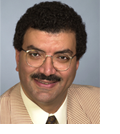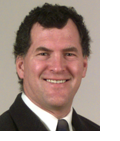| |
|
A member service that keeps you up-to-date on important new literature relevant to your practice.

|
|
In this issue of JCDA Express our contributors highlight articles on cast metal core/resin core restorations, cardiovascular implantable electronic device infections, remineralization technology and inferior alveolar nerve injury.
This edition of JCDA Express also features the introduction of the “JCDA Clinical Pearl”—the one key message that dentists can take away from each selected article.
JCDA would like to gratefully acknowledge the publishers of these articles, who have granted free access to the full-text papers until March 29, 2010. Follow the links in the Notes and News sidebar to discover more about these publications.
Remember to follow JCDA.ca on Twitter to keep informed when new clinical and scientific material is posted to JCDA.ca. Please tweet or send me an email with topics you would like to see covered in future editions of JCDA Express.
Yours sincerely,
Dr. John P. O'Keefe
Editor-in-chief
jokeefe@cda-adc.ca
|
|


 |
|
|
Cast Metal Core/Resin Core Restorations

Dr. Omar El-Mowafy is a professor of restorative dentistry in the department of clinical sciences at the University of Toronto faculty of dentistry. Dr. El-Mowafy recommends:
Hikasa T, Matsuka Y, Mine A, Minakuchi H, Hara ES, Van Meerbeek B, et al. A 15-year clinical comparative study of the cumulative survival rate of cast metal core and resin core restorations luted with adhesive resin cement. Int J Prosthodont. 2010;23(5):397-405.
Full-text access to this article has expired.
JCDA Clinical Pearl:
- 78.7% survival rate for composite cores at 15 years, compared to 55.4% for cast metal cores.
Key points:
- This article reports on a long-term clinical trial comparing the survival of cast metal post/core build-ups to prefabricated posts/resin composite core build-ups.
- The study followed 991 participants (372 cast metal cores and 1,752 composite core build-ups) for up to 15 years.
- Restorations were performed by 45 unique operators (faculty professors, post-graduate students and residents) in a hospital setting in Okayama, Japan.
- Cast post/cores were bonded in place with resin cement and prefabricated posts were similarly bonded. Teeth restored with cores further received crowns or acted as abutments for a bridge.
- Statistical analysis revealed a survival rate of 78.7% for composite cores at 15 years, which was significantly higher than a 55.4% rate for cast metal cores.
- Failures included core loosening, core removal due to caries, tooth or post fractures, and tooth extraction.
- Significant risk factors associated with an increased failure of cores were gender (males), absence of remaining dentinal structure, age (older) and restoration material (cast metal).
- Incidence of core complications (e.g., caries, tooth fracture and periodontal disease) was significantly higher in the cast metal core group.
Reasons for recommending this article:
Dentists in general practice are restoring endodontically treated teeth on a more routine basis. The findings of this long-term clinical study could help dentists decide what material or techniques to use when rebuilding endodontically treated teeth. The study's 15-year follow-up period is unique and adds significantly to the value and credibility of the research. The large sample size (over 2000 restorations) and the use of multiple operators (45 different practitioners) ensure the reliability of the study findings. This study is fit to become a classic reference for textbooks written on the subject.
|
|
 |
Cardiovascular Implantable Electronic Device Infections

Dr. Susan Sutherland is chief of dentistry at the Sunnybrook Health Sciences Centre in Toronto and chair of CDA's Committee on Clinical and Scientific Affairs. Dr. Sutherland recommends:
Baddour LM, Epstein AE, Erickson CC, Knight BP, Levison ME, Lockhart PB, et al. A summary of the update on cardiovascular implantable electronic device infections and their management. A scientific statement from the American Heart Association. J Am Dent Assoc. 2011;142(2):159-65.
Full-text access to this article has expired.
JCDA Clinical Pearl:
-
No scientific data support the use of antimicrobial prophylaxis to prevent cardiovascular implantable electronic device (CIED) infections prior to routine invasive dental procedures.
Key points:
- The number of people with CIEDs (such as pacemakers) has increased significantly in recent years—especially in older people with more comorbid conditions. As a result, higher rates of CIED infection have also been reported.
-
The American Heart Association (AHA) reviewed over 140 articles in the scientific literature on cardiac electrophysiologic device infections from 1950 to 2007. None of the identified articles reported hematological infection from dental, gastrointestinal, genitourinary, dermatologic or other procedures.
- CIED infections due to an oral pathogen are considered a rare event. The AHA statement concludes that such infections most likely derive from a bacteremia from other common events, like toothbrushing or chewing food.
- The review also revealed a predominance of staphylococci—not oral flora—as pathogens in CIED infections. Therefore, this finding suggests that antibiotic prophylaxis for dental procedures is of little or no value.
- The primary AHA recommendation is that there is currently no scientific basis for the use of prophylactic antibiotics prior to routine invasive dental, gastrointestinal, or genitourinary procedures to prevent CIED infection.
Reasons for recommending this article:
Because dentists are treating a greater number of older individuals with CIEDs at their practices, it is helpful to have the latest information on oral bacteremias and the risk of CIED infection. The AHA scientific statement provides dentists with the most up-to-date evidence on the subject of CIED infections and their management. The AHA findings reinforce the concept that dentists should use antibiotics prudently. This practise can help discourage the growth of antibiotic-resistant bacterial pathogens as well as decrease the incidence of serious allergic reactions.
|
|
 |
|
|
Remineralization Technology

Dr. Jonathan Ng is a resident of the graduate prosthodontics program at the University of British Columbia.
Dr. Chris Wyatt is director of the graduate prosthodontics program at the University of British Columbia and a member of CDA's Committee on Clinical and Scientific Affairs.
Drs. Ng and Wyatt recommend:
Reynolds EC. Casein phosphopeptide-amorphous calcium phosphate: the scientific evidence. Adv Dent Res. 2009;21(1):25-9.
Full-text access to this article has expired.
JCDA Clinical Pearl:
-
Casein phosphopeptide-amorphous calcium phosphate (CPP-ACP) can remineralize enamel subsurface lesions, slowing the progression of caries and promoting regression of early caries.
Key points:
-
This article reviews the evidence on the use of CPP-ACP for the prevention and remineralization of early carious lesions.
-
CPP-ACP can stabilize high concentrations of calcium and phosphate ions with fluoride ions on the tooth surface, pellicle and plaque, thus enhancing the remineralization of the tooth structure affected by dental caries.
-
CPP-ACP inhibits demineralization and promotes remineralization of enamel and dentin in vitro.
-
CPP-ACP has been shown to reduce caries activity in a rat caries model with a dose–response effect and had an even greater anti-cariogenic effect in the presence of fluoride.
-
In one study, the daily use of chewing gum with CPP-ACP for 2 years produced an 18% reduction in caries progression in schoolchildren.
-
A study on post-orthodontic white spot regression using CPP-ACP tooth cream showed a 64% reduction in white spots compared to 23% with fluoride alone.
-
A toothpaste of 2% CCP-ACP and 1100 ppm of fluoride was shown to be 2.6 times superior in remineralizing enamel subsurface lesions in situ compared to fluoride alone.
Reasons for recommending this article:
Toothpastes (such as Recaldent Tooth Mousse and GC MI Paste) that contain CPP-ACP have been marketed to dentists in Canada for caries prevention and the remineralization of teeth. This article provides a good summary of the scientific evidence on the CPP-ACP technology. The evidence indicates that CPP-ACP can remineralize enamel subsurface lesions, slowing the progression of caries and promoting regression of early caries. The evidence supports the use of CPP-ACP as an adjunct to fluoride treatment and could be considered as an alternative intervention for patients unwilling to use fluorides.
|
|
 |
|
|
Inferior Alveolar Nerve Injury

Dr. Archie Morrison is an associate professor in the department of oral and maxillofacial surgery at Dalhousie University's faculty of dentistry. Dr. Morrison recommends:
Alhassani AA, AlGhamdi AS. Inferior alveolar nerve injury in implant dentistry: diagnosis, causes, prevention, and management. J Oral Implantol. 2010;36(5):401-7.
Full-text access to this article has expired.
JCDA Clinical Pearl:
-
This article reviews all clinical considerations of inferior alveolar nerve (IAN) injury, a post-surgical complication of dental implant surgery.
Key points:
-
The authors provide a thorough review on IAN injuries that may occur as a result of a surgical implant procedure. The prevalence of this post-surgical complication has been reported as high as 13%.
-
The authors review nerve injury classifications, testing techniques and proper management when such nerve injuries occur. The article also reviews the anatomy of the mandibular nerve.
-
Accurately locating the IAN before a dental implant procedure is an essential preventive measure identified by the authors.
-
The limitations of plain film radiography are also discussed. Although conventional radiography is commonly used, tomography and computerized tomography can also be considered.
-
The article outlines neurosensory tests that practitioners can perform before and after treatment to identify any changes in sensation or to determine if referral to a microneurosurgeon is required.
Reasons for recommending this article
More general practitioners are performing dental implant surgery. This article serves as a current reference for dentists wanting more information on a complication associated with the placement of dental implants. It can also serve as a cautionary reminder to dentists to ensure that we have all the necessary knowledge before determining whether or not an implant case should be referred to a specialist.
|
|
| |
|
|
|
|
|
|

JCDA is the authoritative written voice of the Canadian Dental Association, providing dialogue between the national association and the dental community. It is dedicated to publishing worthy scientific and clinical articles and informing dentists of issues significant to the profession.

|
|
|

|
NOTES AND NEWS
Check out the publications featured in this issue
International Journal of Prosthodontics
(publisher: Quintessence Publishing)
Journal of the American Dental Association
(publisher: American Dental Association)
Advances in Dental Research
(publisher: SAGE)
Journal of Oral Implantology
(publisher: American Academy of Implant Dentistry and American Academy of Implant Prosthodontics)
CDA Annual Convention: Navigating Tomorrow–New Visions, Historical Foundations
August 4-6 in Halifax, NS
The 2011 CDA Convention Program is now available. Continuing education session topics include dental fraud, guided surgery/mini implants, pulp regeneration, implant complications, infection control, local anesthetics and pediatrics.
Register by April 31 for a chance to win a Team Canada jersey signed by Sidney Crosby.
Visit www.cdaconvention2011.com
FDI Annual World Dental Congress: New Horizons in Oral Health Care
September 14-17 in Mexico City, Mexico
Registration is now open for the 99th edition of the FDI Annual World Dental Congress. Early registrants can take advantage of lower registration fees and a wider choice of hotels.
Visit www.fdi2011.org
Canadian Conference on Physician Leadership: Effecting Change Through Influence
May 13-14 in Vancouver, BC
The Canadian Medical Association and Canadian Society of Physician Executives are hosting a 2-day conference and workshop. Dentists can attend to gain insight into achieving behavioural and system change.
Visit www.2011leadership.ca
Have you filled out CDA's Pandemic Plan survey?
In early February, CDA sent email requests to dentists seeking feedback on CDA's Pandemic Plan. Your answers to this short questionnaire are anonymous and confidential and will help CDA prepare for future public health challenges.
Search the JCDA Classified Ads
Looking for employment? Want to sell your practice? Classified ads offer the most effective way to reach all dentists and students in Canada.
Spread the word
Help spread the word about JCDA Express by telling your colleagues about it and reminding them to send CDA their email address.
reception@cda-adc.ca
|
|
|

|

|

|
|



